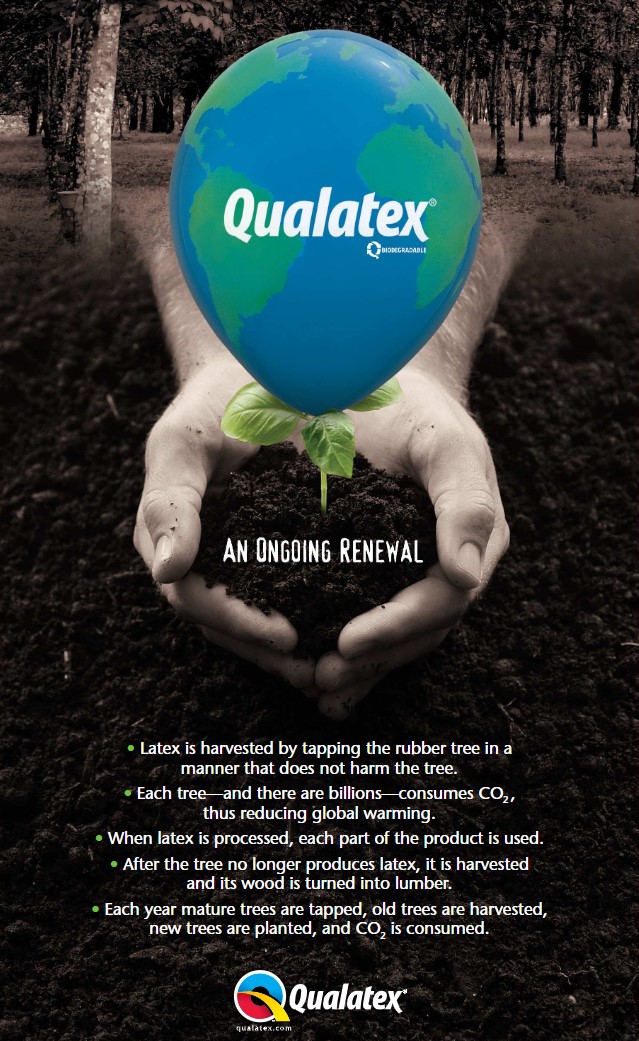A Natural Product
100% Natural Latex
The brands of latex balloons that I use are made from 100% natural latex — not plastic. Our latex balloons decompose as fast as a gum leaf (3-4 years). Composting latex balloons will break them down much faster.
You’ve all had good old rubber bands (not the newer silicone ones) crack and perish over time. Those are also made from latex, just thicker.
We all have a responsibility to care for our environment. Although they eventually break down, that takes time. In the interim, balloon scraps can harm animals that mistake them for food, especially aquatic animals, as latex takes longer to break down in seawater.
Please don't Litter
I avoid using helium (a limited resource) where I can, and focus on air-filled sculpture. Balloons are great fun, but leaving popped balloons on the ground or releasing them into the air is littering.
Releasing balloons was once common to say goodbye to a loved one, but we now know better. There are many beautiful, eco-friendly alternatives. Soap bubbles are one of my favourites.
In Western Australia, there is a $5000 fine for releasing a balloon – whether deliberately OR accidentally.
Please don’t litter.
compost Friendly
Latex balloons can go into your compost! They come from nature and can go back to nature. They do take time to break down, so please be patient.
Unfortunately, some cheap balloons are not 100% latex and have given all balloons a bad reputation. Foil balloons are not biodegradable but ARE REUSABLE (ask me how. I do occasionally use foil balloons, but I educate people to do the right thing.
Airigami, a balloon company based in Rochester, New York, have made a resource for schools or families interested in the science of composting latex balloons. Follow this link for their PDF, and don’t forget to send in your findings.
Thank the Trees
Latex comes from rubber trees: “Hevea Brasiliensis”. Latex is collected by carefully cutting the tree’s bark, then catching the latex in a cup. Latex harvesting doesn’t hurt the tree.
Rubber trees grow in tropical regions like rainforests. Latex harvesting discourages deforestation because latex-producing trees are left intact. A single tree can produce latex for up to 40 years.
The poster below has some more balloony facts about latex production.


